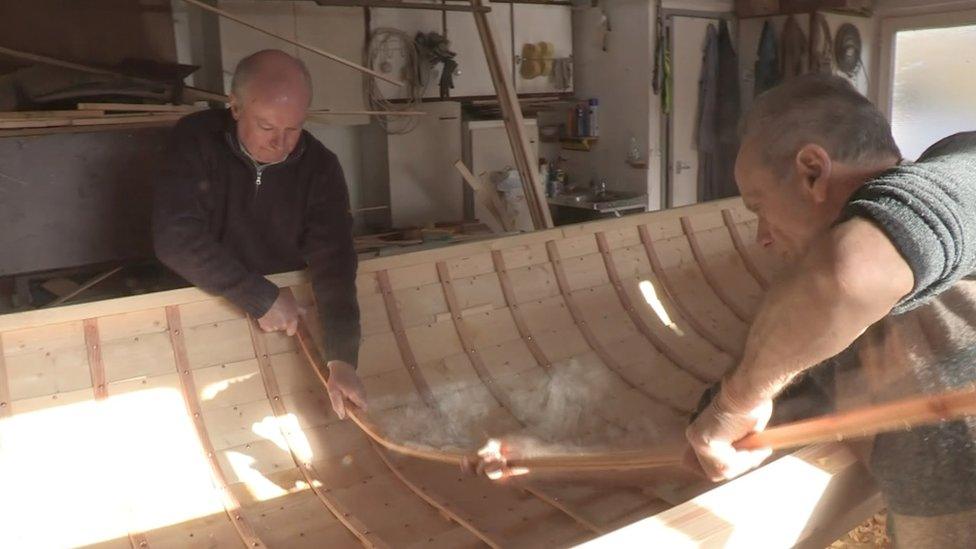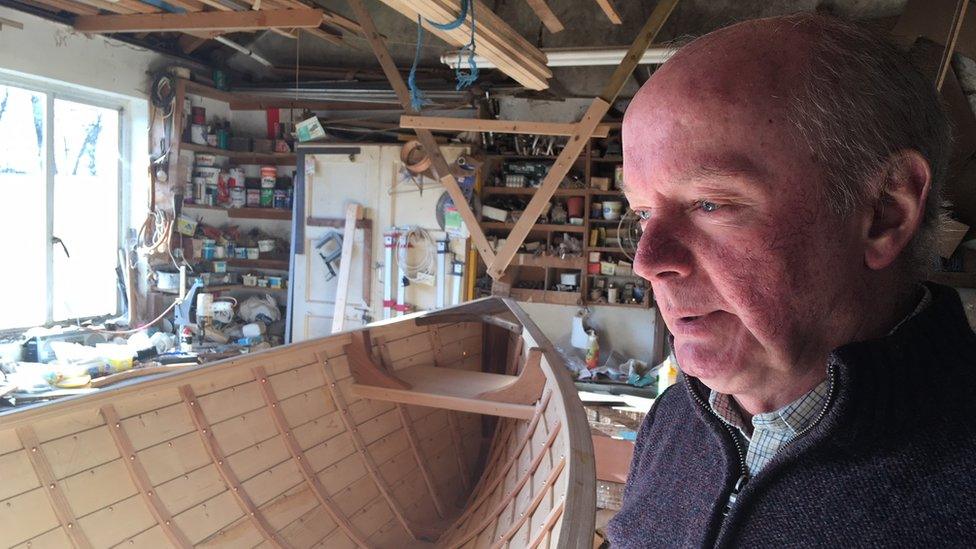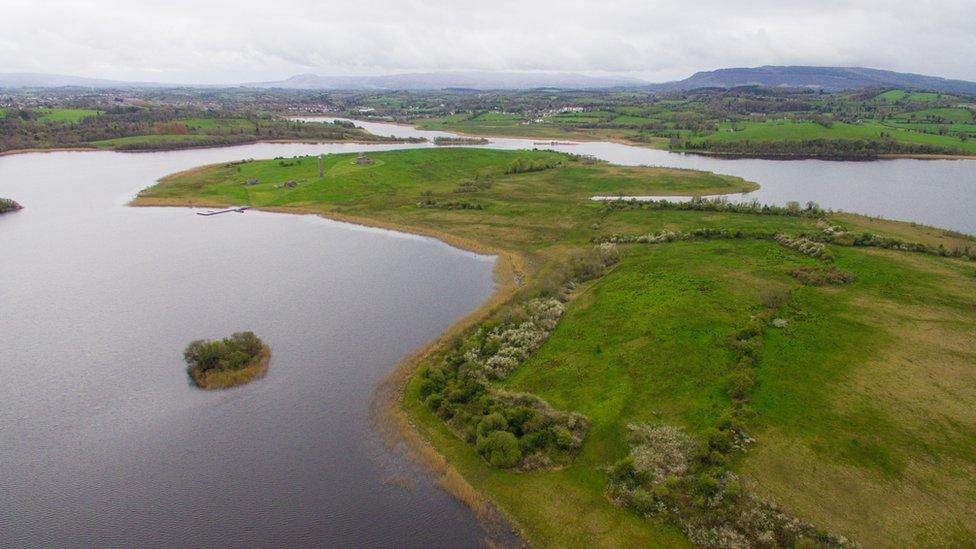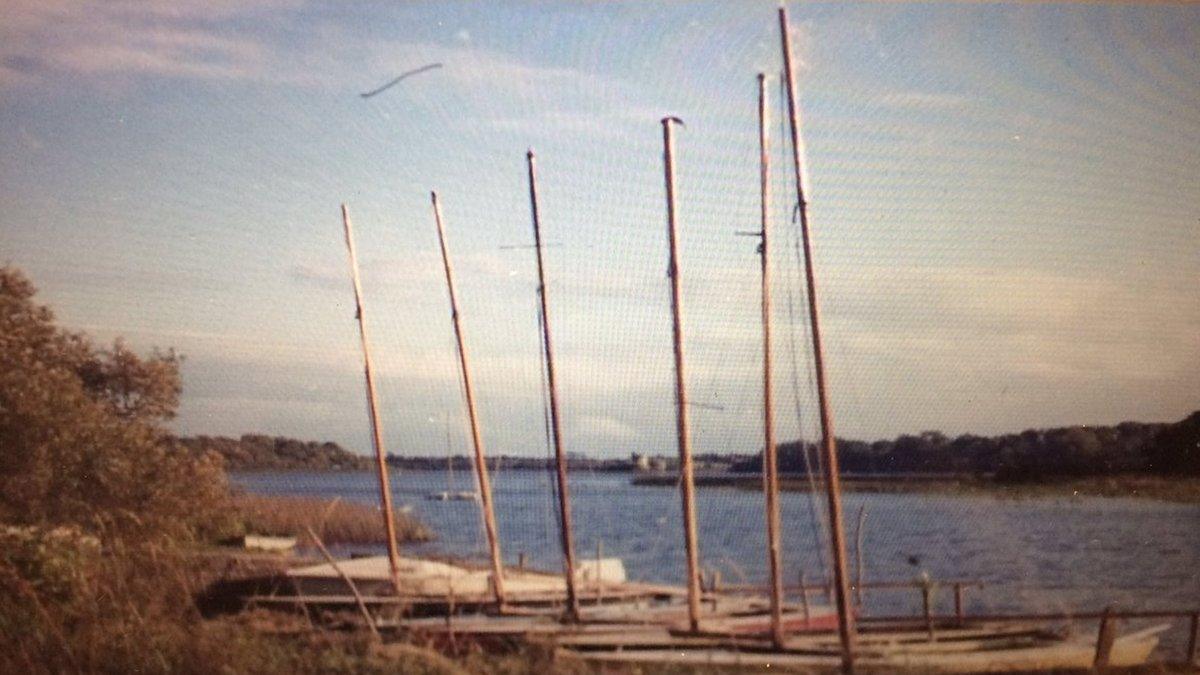Clinker boats return to Lough Erne
- Published
What is a clinker boat?
The honeyed smell of fresh wood fills Fred and George Ternan's garage in the mild, early-spring sunshine.
The brothers have spent hours there over the last year, recreating a piece of their childhood that was once a part of life for everyone living on or around Lough Erne.
"At one time, there were between four and five hundred people living on islands on Lough Erne, which, I'm sure, was unique in the world," said Fred.
"And everybody needed a clinker-built boat, maybe two or three in fact - one on the mainland and one on the island.
"They were just the workhorse, like the tractor on the land."
'Wonder material'
Clinker-built refers to the overlapping construction method used to build the boats. It is how rowing boats were built for centuries before the advent of glass fibre.
"The Vikings would have built their boats the same way, with overlapping boards," continued Fred.
"But once glass fibre came in, it just stopped overnight. It was the 'wonder material' and it didn't require much skill to build a glass fibre boat."

The brothers also had to build a steam box to help soften the wood for the ribs of the boat
There is definite skill required in building a clinker-rowing boat: working with the wood, shaping the intimmers (a Norse word for the ribs, which has endured) that line the inside of it.
Then there is the maintenance required to keep the boat water-ready.
"The glass fibre boat requires little or no maintenance, whereas these boats had to be painted every year," said Fred.
"They had to be pulled up, turned upside down, left to dry for so long - which is why you needed two boats - and then you had to paint it.
"Sometimes they got damaged and had to be repaired and all of that, of course, was hard work.
"When the glass fibre boats came in, you didn't have to do that anymore."
Bending the rib
The advent of glass fibre boats saw traditional boat-building in Fermanagh largely die out by the late sixties.
However, some island dwellers, like Fred, kept the original moulds used for making their family boats.
It is those that the brothers have relied on to create this almost 18-foot-long faithful reproduction.
They have also built a steam box to soften the intimmers and shape them into the frame of the boat.
The wood is placed in the box and steam from boiling water is pumped in.
As the heat and moisture build up, they soften the wood, but time is of the essence when the strip is taken out.
It cools very quickly, so bending the rib into the boat is a two-man job, the steam rising around the brothers as they hammer the nails home.

Fred Ternan built the boat to help educate people about Fermanagh's boat building heritage
This clinker-built boat will be finished and painted, then used to demonstrate to people how important these craft were to life on the Lough.
And they were not always rowed.
"No-one now, apart from ourselves, would have used a boat with a spritsail," says Fred.
"We can remember six people on Lough Erne who would have used spritsails on their rowing boats up until the late sixties.
"But everyone used to carry a spritsail as well as row."

The wooden boats were used regularly to travel between the islands on Lough Erne
As a driving force behind the Lough Erne Heritage group, Fred is living his passion for boats and the history of the Lough.
"Many people don't realise the extent of boat-building that went on in Fermanagh but for Lough Erne Heritage telling them about it," Fred said.
"So we felt that really, because there are so few of these boats left, it would be better to build one. "
This boat will take to the water in April, the first time in half a century that a clinker-built boat will have sailed Lough Erne.
- Published2 August 2017
